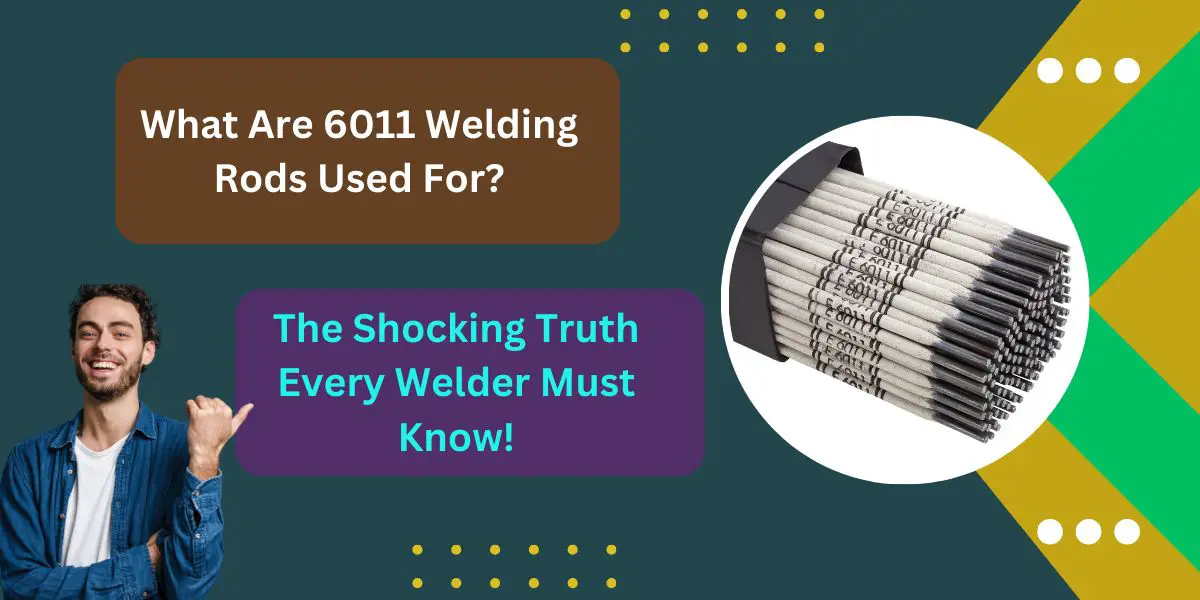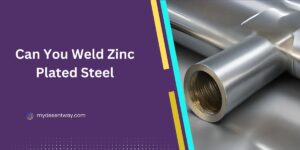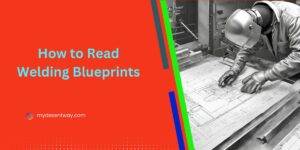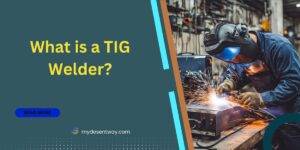Table of Contents
- Understanding 6011 Welding Rods
- Composition and Classification
- Advantages of 6011 Welding Rods
- Common Applications
- Welding Techniques with 6011 Rods
- Safety Precautions
- Storage and Handling
- Best Practices for Welding with 6011 Rods
- Comparing 6011 with Other Welding Rods
- Troubleshooting Tips
- Maintenance and Post-Welding Procedures
- Sustainability and Environmental Impact
- Innovations and Future Prospects
- Ideal Rod Diameter and Flux Thickness for 6011 Welding
- What is the difference between 6011 and 7018
- What’s the difference between 6011 and 6013 welding rods
- Is 6011 or 7018 easier to weld
- What is the purpose of the 6011 welding rod?
- 6011 Rods – pros and Cons
- Conclusion
- FAQs
Welding is a fundamental process used in various industries, and choosing the right welding rod is crucial for achieving solid and durable welds. One such popular choice is the 6011 welding rod.
In this article, we will delve into the world of 6011 welding rods, exploring their composition, applications, welding techniques, and more. So, let’s get started!
Understanding 6011 Welding Rods
6011 welding rods belong to the family of carbon steel electrodes, designed for both mild steel and galvanized steel welding. These versatile rods are known for their ease of use and outstanding welding properties. Whether you are a beginner or an experienced welder, 6011 rods offer a reliable and efficient solution for various welding applications.
Composition and Classification
The American Welding Society (AWS) classifies welding rods based on their composition. The “60” in 6011 indicates a minimum tensile strength of 60,000 pounds per square inch (psi). The first “1” in the classification signifies the rod’s usability in all welding positions. In contrast, the second “1” suggests that it can be used with direct current electrode negative (DCEN) and alternating current (AC) welding machines.
The composition of 6011 welding rods typically includes a mix of cellulose, potassium, and titanium. The cellulose content enables deep penetration, while the potassium and titanium additives promote arc stability and easy ignition.
Advantages of 6011 Welding Rods
6011 welding rods come with a host of advantages that make them a popular choice among welders:
- Versatility: They can be used for both AC and DCEN welding processes, providing flexibility for various welding tasks.
- Deep Penetration: The cellulose content allows for deep penetration, making them suitable for welding thick materials.
- Easy Ignition: 6011 rods are easy to ignite, which is especially beneficial for beginners or in adverse weather conditions.
- Minimal Slag: These rods produce minimal slag, reducing post-weld cleanup efforts.
Common Applications
6011 welding rods find extensive use in several industries due to their versatility and reliability. Some typical applications include:
- Construction: They are commonly used in construction projects for welding structural steel and beams.
- Pipeline Welding: 6011 rods are utilized for pipeline welding due to their deep penetration capabilities.
- Maintenance and Repair: These rods are ideal for repair work and maintenance of machinery, vehicles, and equipment.
- Shipbuilding: In the shipbuilding industry, 6011 rods are employed for various welding tasks.
- Fabrication: They are popular in metal fabrication shops for joining steel components.
Welding Techniques with 6011 Rods
Using 6011 welding rods requires a few essential techniques to achieve optimal results:
- Arc Length: Maintain a consistent arc length between the rod and the workpiece for stable welding.
- Electrode Angle: Hold the electrode at a 20-30-degree angle in the direction of welding to ensure proper penetration.
- Travel Speed: Control the travel speed to avoid overheating and maintain uniform weld beads.
- Weaving: Utilize weaving patterns for more comprehensive welds and better coverage, especially with thicker materials.
Safety Precautions
As with any welding process, safety should be the top priority. When using 6011 welding rods, consider the following precautions:
- Protective Gear: Always wear appropriate safety gear, including a welding helmet, gloves, and protective clothing.
- Ventilation: Work in a well-ventilated area to avoid inhaling fumes and gases produced during welding.
- Grounding: Ensure proper grounding of the welding machine to prevent electric shocks.
- Fire Safety: Have a fire extinguisher nearby and be cautious of sparks that may cause fires.
Storage and Handling
To maintain the integrity of 6011 welding rods and extend their shelf life, follow these storage and handling guidelines:
- Dry Environment: Store the rods in a dry and controlled environment to prevent moisture absorption.
- Sealed Containers: Keep the rods in sealed containers when not in use to protect them from humidity.
- Avoid Dropping: Avoid dropping the rods, as it may damage the coating and affect welding performance.
Best Practices for Welding with 6011 Rods
To achieve high-quality welds and maximize the performance of 6011 rods, consider these best practices:
- Cleanliness: Ensure the workpiece is clean and free from rust, oil, and other contaminants before welding.
- Fit-Up: Properly fit and align the pieces to be welded to ensure a solid and accurate weld.
- Amperage Settings: Adjust the amperage settings according to the thickness of the materials being welded.
- Interpass Temperature: Allow the welded joints to cool before applying for subsequent weld passes.
Comparing 6011 with Other Welding Rods
While 6011 welding rods offer several advantages, they may not be suitable for all welding applications. Let’s compare them with other standard welding rods:
- 6010 Rods: 6010 rods offer similar deep penetration but are limited to DCEN welding and have more slag.
- 7018 Rods: 7018 rods provide excellent weld quality but require precise control and are more challenging for beginners.
- 6013 Rods: 6013 rods are easy to use, but they don’t penetrate as deeply as 6011 rods.
Troubleshooting Tips
Welding with 6011 rods can sometimes present challenges. Here are some troubleshooting tips:
- Excessive Spatter: Reduce amperage and shorten the arc length to minimize spatter.
- Undercutting: Increase travel speed and avoid excessive weaving to prevent undercutting.
- Sticking Electrode: Increase amperage slightly, or use a longer arc to prevent the rod from sticking.
Maintenance and Post-Welding Procedures
After welding with 6011 rods, proper maintenance and post-welding procedures are essential for long-lasting welds:
- Cooling Period: Allow the welded joints to cool down slowly to prevent cracking or distortion.
- Inspection: Inspect the welds for any defects and address them promptly.
- Post-Weld Cleaning: Remove any slag or spatter and clean the weld area for a neat appearance.
Sustainability and Environmental Impact
As the world emphasizes sustainability, it’s essential to consider the environmental impact of welding processes. While 6011 rods are widely used and practical, their high cellulose content may result in increased smoke emissions compared to some other rods. Implementing proper ventilation and using energy-efficient welding machines can mitigate the environmental impact.
Innovations and Future Prospects
The welding industry continuously evolves, and new technologies and materials are introduced to improve welding efficiency and results. Innovations in electrode coatings and welding equipment are likely to influence the performance and usability of 6011 welding rods in the future.
Ideal Rod Diameter and Flux Thickness for 6011 Welding
When it comes to choosing the ideal 6011 welding rod size, your decision should be based on the thickness of the metal you intend to weld. The diameter of the rod directly influences penetration and deposition rate. Opting for a smaller rod might result in a weaker weld, while using a rod that is too thick can lead to undesirable burn holes in your material. Striking the right balance is key.
6011 welding rods come in various sizes, ranging from 3/32 to 5/16 of an inch. Among the most commonly used sizes are 3/32, 1/8, and 5/32, which prove to be efficient for most household repairs. If you’re dealing with metals over half an inch thick, thicker rods are advisable, though they require higher amperage. For instance, 5/16 rods demand up to 425 amperes for effective operation.
The significance of flux coating lies in preventing molten iron and steel from reacting with oxygen in the air, which could result in rust formation. Without proper flux, the arc becomes erratic and challenging to control, leading to uneven pools of porous metal. By creating a barrier between the metal and the air, the flux stabilizes the arc and enhances the rate of metal deposition on the material, resulting in a solid weld.
In the case of stick electrodes, the flux thickness may vary from 1mm to 3mm.
The 6011 welding rods stand out due to their high cellulosic flux, providing deeper penetration than other rods. Additionally, they offer exceptional stability, enabling welding in all positions.
Uphill and downhill welding proves equally efficient, with gravity aiding better pool build-up in uphill applications. The slag produced by the flux is easy to clean up, and the resulting weld metal exhibits commendable mechanical properties.
However, it is essential to note that the flux in 6011 rods contains cellulose as its primary ingredient, which produces a significant amount of hydrogen. While this enhances welding capabilities, hydrogen can cause extensive cracking in high-strength metals, rendering these rods unsuitable for bridge construction.
Nonetheless, they find widespread use in pipelines and are more than adequate for most fabrication tasks around your home and garage. Embrace the versatility of these rods and equip yourself with the right tools for your welding endeavors.
What is the difference between 6011 and 7018
- Chemical Composition:
- The 6011 welding rod belongs to the cellulose potassium category and has a cellulose-based flux coating. This coating allows for deep penetration and makes it suitable for welding in various positions, including vertical and overhead.
- The 7018 welding rod, on the other hand, falls under the low-hydrogen category and has a low-hydrogen flux coating. This coating ensures cleaner and smoother welds, making it ideal for critical applications that require high tensile strength.
- Welding Positions:
- The 6011 welding rod excels in welding in vertical and overhead positions due to its deep penetration capabilities. This makes it suitable for construction, pipelines, and shipbuilding.
- The 7018 welding rod is versatile and can be used in various positions, but it performs exceptionally well in flat and horizontal positions. It is commonly used in structural welding, pressure vessels, and heavy equipment fabrication.
- Skill Level and Technique:
- The 6011 welding rod is considered more forgiving and accessible for beginners or less experienced welders. It can handle various metal conditions and welding positions, allowing some margin of error while still producing reliable results.
- The 7018 welding rod demands greater skill and precise techniques from the welder. Its low-hydrogen characteristics require careful handling and storage to maintain optimal performance and prevent weld defects.
- Applications:
- The 6011 welding rod is versatile and widely used for general-purpose welding tasks. It is suitable for welding mild steel, galvanized steel, and other metals in different positions.
- The 7018 welding rod is preferred for critical applications where high tensile strength and precise welds are required. It is commonly used for welding carbon steel and projects that demand exceptional weld integrity.
What’s the difference between 6011 and 6013 welding rods
The 6011 welding rod has a strong and deep penetration ability, making it great for welding in tough vertical and overhead positions. It works well on dirty or rusty metals and is commonly used in construction and repair work.
On the other hand, the 6013 welding rod provides a smoother and more controlled arc, resulting in cleaner welds. It’s ideal for welding thin metals and is commonly used for light to medium-duty tasks.
Is 6011 or 7018 easier to weld
Between the 6011 and 7018 welding rods, the 6011 rods are generally considered easier to weld, especially for beginners or less experienced welders.
The 6011 welding rod has forgiving characteristics, allowing for some margin of error while still producing reliable results. It offers excellent penetration and works well on various metal conditions, including dirty or rusty surfaces. Additionally, the 6011 rod is highly versatile and can be used in different positions, such as vertical and overhead welding.
On the other hand, the 7018 welding rod demands more precise techniques and greater skill from the welder. Its low-hydrogen flux coating requires careful handling and proper storage to maintain optimal performance and prevent weld defects. The 7018 rod is often used for critical applications that require high tensile strength and precise welds, making it more suitable for experienced welders.
What is the purpose of the 6011 welding rod?
The purpose of the 6011 welding rod is to create strong and stable welds, particularly in challenging welding conditions and various metal types.
The 6011 welding rod is known for its deep penetration capability, making it an excellent choice for welding under challenging positions, such as vertical and overhead. It is often used in construction, pipelines, shipbuilding, and other applications where welding in challenging angles is necessary.
One of the significant advantages of the 6011 rods is its ability to weld on dirty, rusted, or painted metals effectively. The cellulose-based flux coating on the rod creates a penetrating arc that can handle less-than-ideal welding surfaces, making it suitable for various repair and maintenance tasks.
Additionally, the 6011 welding rod is versatile and compatible with different types of metals, including mild steel and galvanized steel. Its adaptability and reliable performance in adverse conditions make it a popular choice among welders in various industries.
6011 Rods – pros and Cons
Conclusion
In conclusion, 6011 welding rods are a reliable and versatile choice for various welding applications. Their ease of use, deep penetration capabilities, and minimal slag production make them a preferred option for both beginners and experienced welders. By following proper techniques and safety precautions, welders can achieve high-quality welds with 6011 rods, ensuring the longevity and integrity of the welded components.
FAQs
Are 6011 welding rods suitable for stainless steel welding?
No, 6011 welding rods are not suitable for welding stainless steel. They are specifically designed for mild steel and galvanized steel welding.
Can I use 6011 rods for vertical welding positions?
Yes, 6011 welding rods are suitable for all welding positions, including vertical welding.
Are 6011 rods suitable for underwater welding?
While 6011 rods can be used for some underwater welding applications, specialized electrodes are typically used for more demanding underwater welding tasks.
Can I use 6011 rods with an AC welding machine?
Yes, 6011 welding rods can be used with both AC and DCEN welding machines.
Where can I purchase authentic 6011 welding rods?
Authentic 6011 welding rods can be purchased from welding supply stores, hardware stores, or online welding equipment retailers.










3 thoughts on “What Are 6011 Welding Rods Used For?”